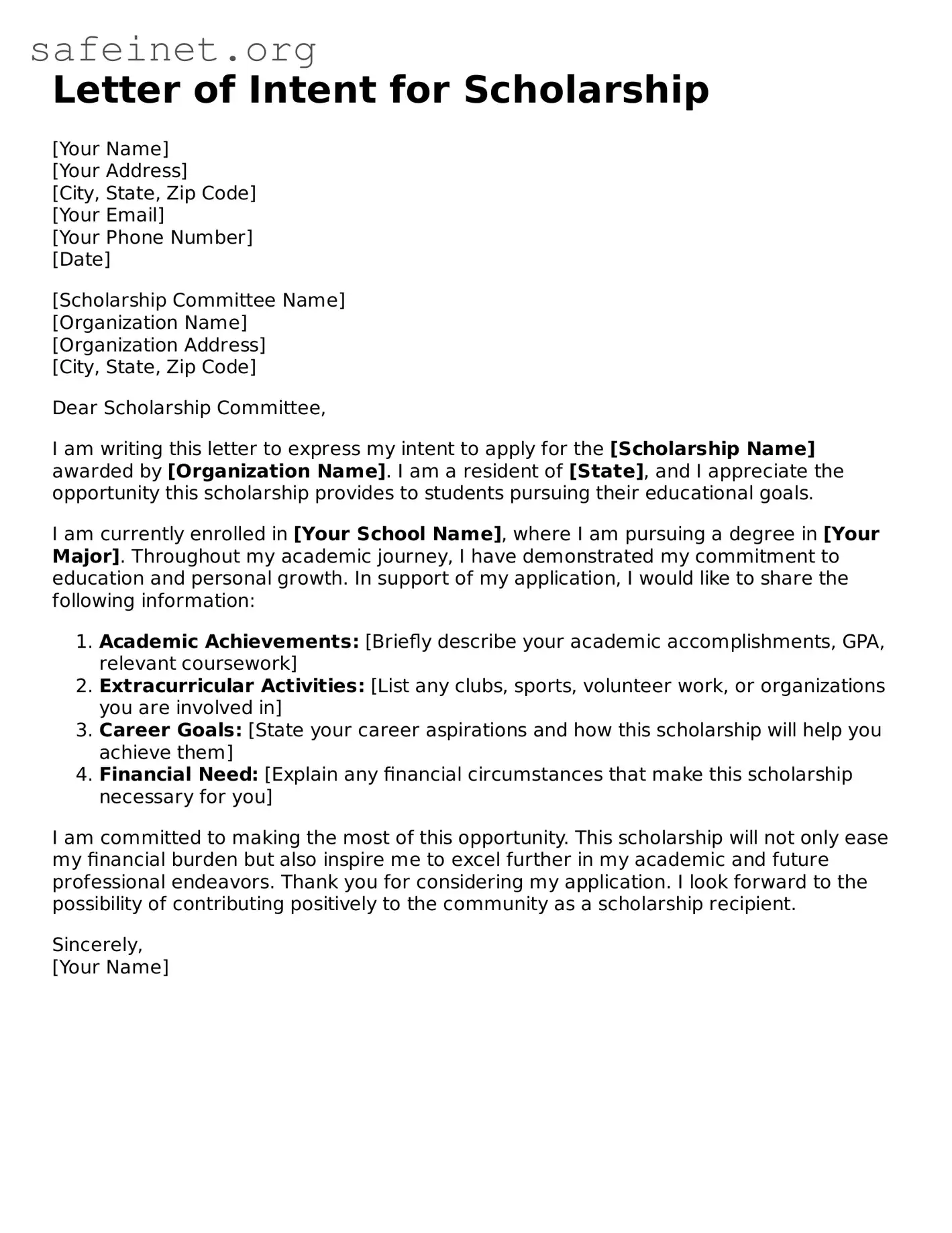What is a Letter of Intent for Scholarship?
A Letter of Intent for Scholarship is a formal document that expresses a student's desire to apply for a scholarship. It outlines the student's qualifications, aspirations, and reasons for seeking financial assistance. This letter helps the scholarship committee understand the applicant's motivations and goals.
Why is it important to submit a Letter of Intent?
Submitting a Letter of Intent can set a student apart from others applying for the same scholarship. It provides a platform for the applicant to convey their unique story and demonstrate their commitment to their educational and career goals. A strong letter can significantly enhance the chances of securing funding.
What should be included in the Letter of Intent?
The Letter of Intent should include the student’s background, academic achievements, extracurricular activities, and future aspirations. It's also important to explain why the scholarship is important and how it will help in achieving academic and career goals. Personal anecdotes can add a compelling touch, making the letter more relatable and memorable.
How long should the Letter of Intent be?
Typically, a Letter of Intent should be concise yet informative, ranging from one to two pages in length. It is crucial to keep the document focused and to the point, avoiding unnecessary information while still delivering a compelling message. Clarity and directness are essential.
Is there a specific format for the Letter of Intent?
While there is no one-size-fits-all format, a Letter of Intent generally follows standard business letter structure. This includes a heading with the date and recipient’s information, a greeting, the body of the letter, and a closing signature. Maintaining a professional tone is key.
When should I submit my Letter of Intent for Scholarship?
Submission deadlines can vary based on the scholarship provider. It’s vital to adhere to the specific timeline outlined in the scholarship guidelines. Ideally, the letter should be submitted early, giving the committee ample time to review the application comprehensively.
Can I use a template for the Letter of Intent?
Using a template can be helpful for structure, but personalization is vital. Scholarship committees look for genuine expression and individuality. While a template can provide a framework, the content should reflect the applicant’s unique experiences and qualifications to make a lasting impact.
